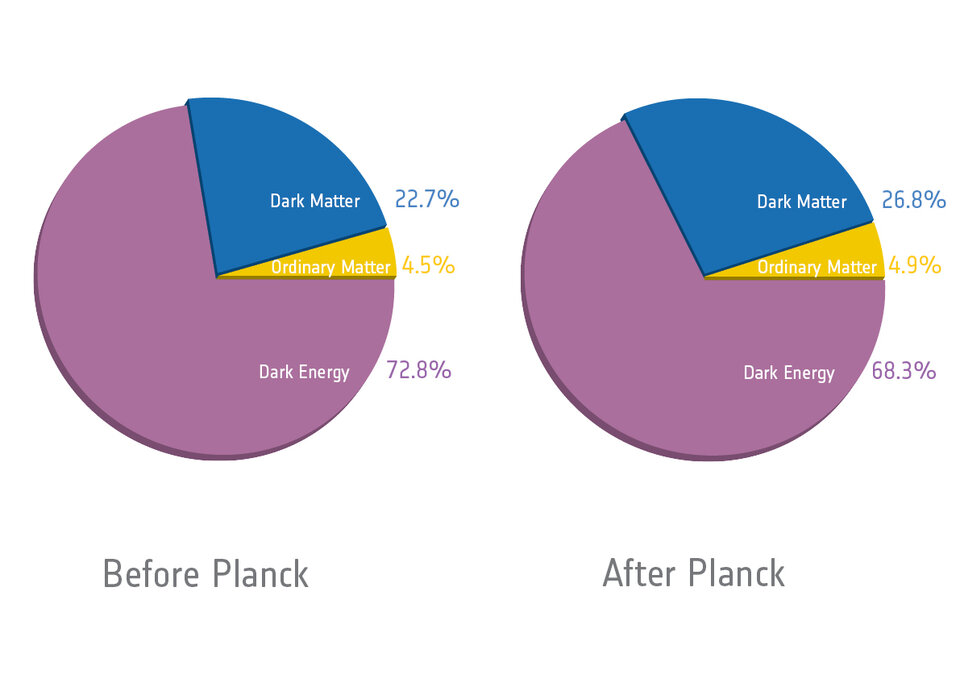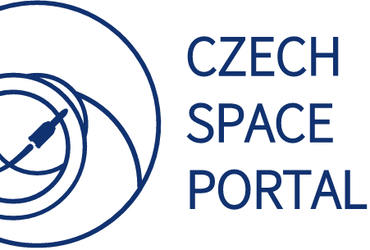Ke kosmickému teleskopu Planck byl vyslaný poslední příkaz
Kosmický teleskop ESA Planck byl vypnut po téměř 4,5 letech „nasávání“ reliktního záření z Velkého třesku a studování vývoje hvězd i galaxií od počátku vzniku vesmíru.
Projektový vědec Jan Tauber poslal závěrečný příkaz k observatoři 23. října 2013 ve 12:10:27 UT (14:10:27 h středoevropského času), čímž ukončil činnost tohoto „stroje času“ z dílny ESA.
Družice Planck byla vypuštěna v roce 2009 s tím, že byla navržena k zachycení nejslabších zbytků reliktního záření z Velkého třesku – tzv. kosmického mikrovlnného pozadí (Cosmic Microwave Background, CMB). Právě CMB uchovává obraz vesmíru z doby nějakých 380 tisíc let po Velkém třesku a poskytuje detaily o původních podmínkách panujících ve vesmíru, ve kterém dnes žijeme.
„Družice Planck nám toho prozradila o vývoji vesmíru mnohem více, než jakákoliv jiná dřívější mise,“ uvádí ředitel ESA pro vědu a robotický průzkum Alvaro Giménez.
„Snímek CMB vytvořený observatoří Planck nám nabízí dosud nejpřesnější snímek z dětství našeho vesmíru. Obrovské množství dat je našimi kosmology ale teprve zpracováváno a ještě nám poskytne mnoho dalších detailů.“

Mise se začala blížit svému konci v srpnu, když byla družice odeslána pryč z operační dráhy kolem bodu L2 v soustavě Slunce-Země na vzdálenější a dlouhodobě stabilní parkovací dráhu kolem Slunce.
V posledních týdnech pak byla observatoř připravována na trvalou hibernaci, když bylo v rámci ukončovacích aktivit spotřebováno zbývající palivo a následně došlo k definitivnímu vypnutí vysílač.
„S neskrývaným smutkem jsme provedli finální operace s družicí Planck, ale zároveň je to čas slavit mimořádně úspěšnou misi,“ uvádí manažer operací družice Planck ve středisko ESOC Steve Foley.
„Observatoř Planck byla sofistikovanou aparaturou vyslanou na komplexní misi. A díky úžasné týmové práci našich letových dispečerů, specialistů na dynamiku letu, personálu pozemních stanic i průmyslových partnerů získala Evropa ze své investice výrazný přínos,“ uzavírá ředitel letových operací mise Paolo Ferri.
ESA member states provided key technologies such as the innovative cooler that allowed the mission’s instrumentation to be maintained at just one-tenth of a degree above the coldest temperature reachable in the Universe, –273.15°C, so that the spacecraft’s own heat did not swamp the signal from the sky. This enabled temperature variations of just a few millionths of a degree to be distinguished in the CMB.
But cooling instruments to these extreme temperatures cannot be maintained forever and, indeed, the High Frequency Instrument (HFI) exhausted its liquid helium coolant in January 2012, just as expected.
The Low Frequency Instrument (LFI) meanwhile was able to operate at somewhat higher temperatures using the remaining two coolers and continued making observations until 3 October. After conducting post-science activities, it was manually switched off on 19 October.
The mission’s original target was to complete two whole surveys of the sky but, in the end, Planck completed five full-sky surveys with both instruments. Moreover, by mid-August, LFI had completed its eighth survey of the entire sky.

“Planck continued using LFI right up until last week, exceeding all expectations and providing us with bountiful data to work with in the future,” says Jan Tauber, ESA’s Planck project scientist.
The first detailed image of the faint signal from the CMB from Planck was released earlier this year, after foreground emission from our own Milky Way Galaxy as well as all other galaxies had been removed. These latter data resulted in a new catalogue of objects, including many never-before-seen galaxy clusters in the distant Universe.
The 2013 data release provided revised values for the relative proportions of the ingredients of the Universe, namely normal matter that makes up stars and galaxies, dark matter, which has thus far only been detected indirectly by its gravitational influence, and dark energy, a mysterious force thought to be responsible for accelerating the expansion of the Universe.
“Planck has given us a fresh look at the matter that makes up our Universe and how it evolved, but we are still working hard to further constrain our understanding of how the Universe expanded from the infinitely small to the extraordinarily large, details which we hope to share next year,” says Dr Tauber.
More information
For more on Planck’s science highlights, see our article published on 18 October: Celebrating the legacy of ESA’s Planck mission.
About Planck
Launched in 2009, Planck was designed to map the sky in nine frequencies using two state-of-the-art instruments: the Low Frequency Instrument, which includes the frequency bands 30–70 GHz, and the High Frequency Instrument, which includes the frequency bands 100–857 GHz. HFI completed its survey in January 2012, while LFI continued to make science observations until 3 October 2013, before being switched off on 19 October.
Planck’s first all-sky image was released in 2010 and the first scientific data were released in 2011. The first image of the CMB was released in March 2013. The next set of cosmology data will be released in 2014.
The Planck Scientific Collaboration consists of all the scientists who have contributed to the development of the mission, and who participate in the scientific exploitation of the data during the proprietary period. These scientists are members of one or more of four consortia: the LFI Consortium, the HFI Consortium, the DK-Planck Consortium, and ESA’s Planck Science Office. The two European-led Planck Data Processing Centres are located in Paris, France and Trieste, Italy.
The LFI consortium is led by N. Mandolesi, Agenzia Spaziale Italiana ASI, Italy (deputy PI: M. Bersanelli, Universita’ degli Studi di Milano, Italy), and was responsible for the development and operation of LFI. The HFI consortium is led by J.L. Puget, Institut d’Astrophysique Spatiale in Orsay, France (deputy PI: F. Bouchet, Institut d’Astrophysique de Paris, France), and was responsible for the development and operation of HFI.
For further information, please contact:
Markus Bauer
ESA Science and Robotic Exploration Communication Officer
Tel: +31 71 565 6799
Mob: +31 61 594 3 954
Email: markus.bauer@esa.int
Jan Tauber
ESA Planck Project Scientist
Tel: +31 71 565 5342
Email: Jan.Tauber@esa.int















 Germany
Germany
 Austria
Austria
 Belgium
Belgium
 Denmark
Denmark
 Spain
Spain
 Estonia
Estonia
 Finland
Finland
 France
France
 Greece
Greece
 Hungary
Hungary
 Ireland
Ireland
 Italy
Italy
 Luxembourg
Luxembourg
 Norway
Norway
 The Netherlands
The Netherlands
 Poland
Poland
 Portugal
Portugal
 Czechia
Czechia
 Romania
Romania
 United Kingdom
United Kingdom
 Slovenia
Slovenia
 Sweden
Sweden
 Switzerland
Switzerland





























